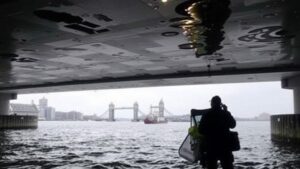Detecting for Coins in Covered Bridges and River Crossings
Detecting for Coins in Covered Bridges and River Crossings
Coin detecting in historical sites, particularly covered bridges and river crossings, has gained popularity among enthusiasts and historians alike. These locations are often rich with artifacts, including coins that may tell stories of the past. This article elucidates the methods, tools, and considerations involved in detecting for coins in these unique environments, along with case studies and statistical insights into the yield of such activities.
Understanding the Historical Context
Covered bridges and river crossings are significant from both engineering and historical perspectives. Built primarily in the 19th century, these structures have served as critical transportation links in rural areas. Historically, they have also been sites of commerce, gatherings, and sometimes conflict. As a result, they are potential treasure troves for coin detecting, as individuals from various eras may have lost items during their traverses.
Selecting the Right Equipment
Effective coin detection requires specific tools tailored for the environment. primary equipment includes:
- Metal Detectors: Choosing a metal detector with good sensitivity to coins is paramount. Devices like the Minelab CTX 3030 or Garrett AT Pro are popular choices due to their features and performance in varying soil conditions.
- Digging Tools: A durable trowel or small digging shovel is essential for excavating coins without damaging them.
- Pinpointers: These handheld devices help locate coins precisely in the ground, minimizing the time spent digging.
- Finds Pouch: A secure pouch to store found items is crucial for organization and preservation.
Techniques for Successful Coin Detecting
Coin detecting in covered bridges and river crossings involves a strategic approach:
- Research: Prior to detecting, conduct thorough research. Understanding the bridges history and prior events can provide clues about potential coin finds.
- Ground Investigation: Examine the ground for areas with high foot traffic historically. This could include pathways leading to the bridge or areas where people congregated.
- Timing: After heavy rains, the soil may shift, revealing coins that were previously buried. Choosing the right time can significantly increase success.
Case Studies: Successful Finds
Many enthusiasts have reported valuable finds in covered bridges and river crossings. In 2017, a metal detecting group in Pennsylvania discovered a cache of coins, including a 1901 Indian Head penny and a 1943 silver quarter, beneath a covered bridge near a historic town center. This find was attributed to the bridge’s usage during town gatherings.
Similarly, in 2020, a team near a river crossing in New Hampshire unearthed a collection of early 20th-century coins during a metal detecting event. Their research indicated that this crossing was a busy route for locals to transport goods, making it a hotspot for lost coins.
Potential Challenges and Considerations
While coin detecting can yield rewarding results, it is accompanied by challenges:
- Legal Restrictions: Before detecting, always check local laws and regulations regarding metal detecting, particularly in historic sites.
- Environmental Impact: Be mindful of the surroundings and the impact of digging. Always fill in any holes created during the search.
- Safety Concerns: Ensure safe practices while operating in areas near rivers, as conditions can change rapidly.
Conclusion and Actionable Takeaways
Detecting for coins in covered bridges and river crossings can be a thrilling and rewarding pursuit that connects individuals to history. By selecting appropriate equipment, employing effective techniques, and understanding historical contexts, hobbyists can significantly enhance their chances of a successful find. As you embark on your detecting journey, remember to comply with legal standards and maintain respectful practices to preserve the integrity of these historical venues.
Happy hunting!


